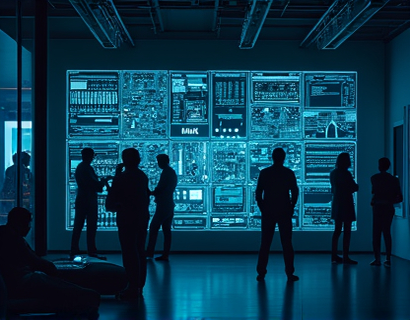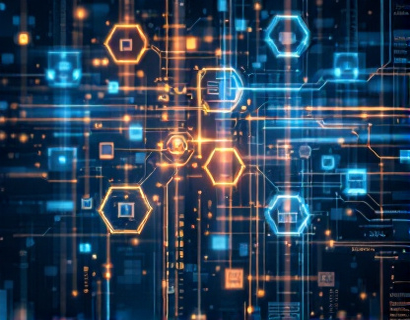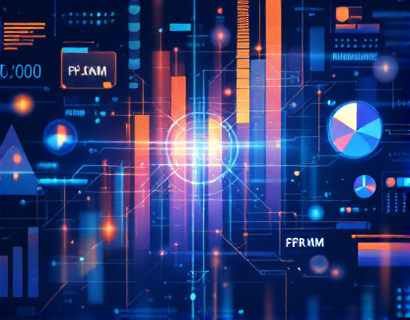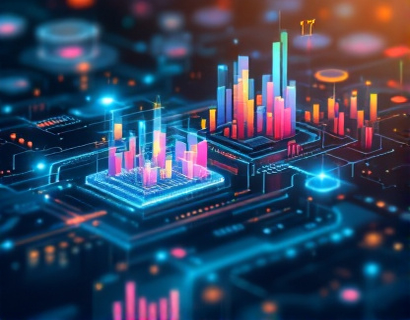The Synergy of Blockchain and AI: Revolutionizing Digital Engagement
The intersection of blockchain technology and artificial intelligence (AI) is giving rise to a new era of digital engagement, one that promises to transform how we interact with technology and each other. This fusion is not just a technological curiosity but a powerful force driving innovation and growth across various sectors. As we delve into this topic, it's essential to understand the fundamental components of both blockchain and AI, and how their integration is reshaping the digital landscape.
Understanding Blockchain Technology
Blockchain, at its core, is a decentralized ledger technology that ensures transparency, security, and immutability in transactions. It operates on a network of nodes, each maintaining a copy of the entire ledger, which is updated in real-time through consensus mechanisms. This decentralized nature eliminates the need for intermediaries, reducing costs and increasing trust among participants. Blockchain's applications extend far beyond cryptocurrencies, encompassing supply chain management, identity verification, and smart contracts, among others.
Exploring Artificial Intelligence
Artificial intelligence, on the other hand, refers to the simulation of human intelligence processes by machines, particularly computer systems. These processes include learning (the acquisition of information and rules for using it), reasoning (using rules to reach approximate or definite conclusions), and self-correction. AI technologies such as machine learning, natural language processing, and computer vision are rapidly advancing, enabling machines to perform tasks that traditionally required human intervention.
The Fusion of Blockchain and AI
The combination of blockchain and AI creates a synergistic effect that enhances the capabilities of both technologies. Blockchain provides a secure and transparent environment for AI models to operate, ensuring data integrity and reducing the risk of manipulation. Conversely, AI can optimize blockchain operations, improving efficiency and scalability. This partnership is paving the way for new applications and services that were previously unimaginable.
Enhanced Data Security and Privacy
One of the most significant benefits of integrating blockchain and AI is the enhancement of data security and privacy. Blockchain's immutable ledger ensures that once data is recorded, it cannot be altered without detection. AI can further bolster this by detecting and preventing anomalous activities in real-time. For instance, machine learning algorithms can analyze patterns in blockchain transactions to identify potential fraud or security breaches, providing a proactive defense mechanism.
Moreover, AI can help in managing privacy concerns by implementing advanced encryption techniques and zero-knowledge proofs. These methods allow for verifiable computations without revealing sensitive information, ensuring that user data remains confidential while still being useful for AI models. This dual approach not only protects user privacy but also builds trust in the digital ecosystem.
Optimized Smart Contracts
Smart contracts, self-executing contracts with the terms directly written into code, are a cornerstone of blockchain technology. However, their execution can be resource-intensive and slow, especially when dealing with complex computations. AI can optimize smart contracts by automating the process of code generation, testing, and deployment. Machine learning algorithms can analyze historical data to predict and mitigate potential issues, ensuring that smart contracts function as intended.
Additionally, AI can enhance the efficiency of smart contracts by dynamically adjusting parameters based on real-time data. For example, in supply chain management, AI can monitor inventory levels and automatically trigger smart contracts to execute payments or adjust orders, streamlining the entire process and reducing manual intervention.
Improved User Experiences
The integration of blockchain and AI is also revolutionizing user experiences across various platforms. Personalization is a key area where this synergy shines. AI algorithms can analyze user behavior and preferences, providing tailored recommendations and services. When combined with blockchain's secure and transparent data management, users can have greater control over their data and how it is used.
Consider digital content platforms where AI-driven content curation is enhanced by blockchain's ability to verify the authenticity and ownership of content. Users can trust that the content they consume is genuine and that creators are fairly compensated through blockchain-based micropayments. This not only improves the user experience but also supports a more sustainable and equitable digital economy.
Decentralized Applications and AI
Decentralized applications (dApps) are another area where blockchain and AI converge to create innovative solutions. dApps leverage blockchain's decentralized nature to provide services without a central authority, ensuring greater resilience and user autonomy. AI can enhance dApps by providing intelligent functionalities such as predictive analytics, natural language understanding, and automated decision-making.
For instance, in the realm of decentralized finance (DeFi), AI can optimize trading strategies, risk management, and portfolio management. AI-driven bots can interact with dApps, executing complex financial operations with precision and speed, all while maintaining the security and transparency of the blockchain.
Challenges and Considerations
Despite the numerous benefits, the integration of blockchain and AI is not without challenges. One of the primary concerns is scalability. Blockchain networks, particularly those using proof-of-work consensus mechanisms, can struggle with high transaction volumes and slow processing times. AI models, especially those requiring extensive data processing, can exacerbate these issues. However, ongoing research into more efficient consensus algorithms and layer 2 solutions is addressing these scalability concerns.
Another challenge is the regulatory landscape. The combination of blockchain and AI operates in a relatively uncharted legal territory, with varying regulations across different jurisdictions. Ensuring compliance while leveraging the full potential of these technologies requires a deep understanding of local and international laws. Organizations must navigate these complexities carefully to avoid legal pitfalls.
Future Prospects
Looking ahead, the future of blockchain and AI integration holds immense potential. As technology continues to evolve, we can expect more seamless and efficient interactions between these two domains. The development of hybrid blockchain-AI platforms will likely become more prevalent, offering enhanced capabilities for data management, security, and user engagement.
Moreover, the rise of edge computing will play a crucial role in this evolution. By processing data closer to the source, edge computing can reduce latency and improve the performance of AI models on blockchain networks. This synergy will enable real-time applications in areas such as IoT, autonomous vehicles, and smart cities, further expanding the horizons of digital engagement.
Conclusion
The fusion of blockchain and AI is a transformative force in the digital world, offering unprecedented opportunities for enhancing user experiences, securing data, and optimizing operations. As these technologies continue to mature and integrate more deeply, we can anticipate a future where digital interactions are more secure, efficient, and personalized. For tech enthusiasts and early adopters, this is an exciting time to explore the possibilities and contribute to shaping the next generation of digital ecosystems.










































